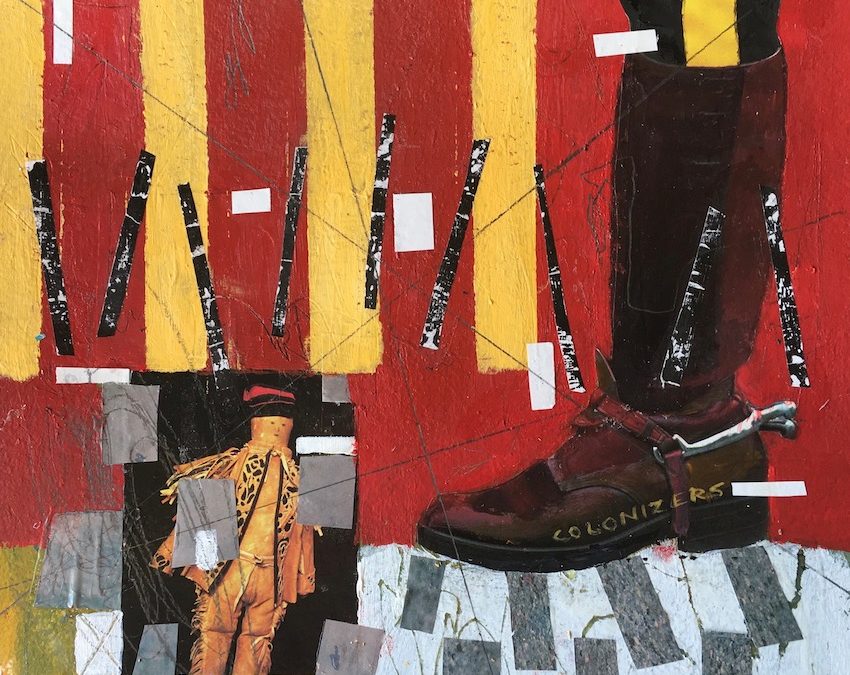Collage done right can be a brilliant addition to a work of art. I am dipping my toe into using collage and collage elements in my work. I have huge respect for those artists who do this well. Jane Ash Poitras is a Canadian artist who uses collage to make work that is powerful and still great art.
The Royal Canadian Mounted Police (RCMP) were such a source of pride to me in the past. I remember seeing the RCMP Musical Ride and having my heart swell seeing the bright red uniforms.
What I was blind to was the full history of the origin of the RCMP.
This Global News article gives background that the history I was taught did not mention.
Read an excerpt from this article
Canada’s first prime minister, Sir John A. Macdonald, got the idea for the Mounties from the Royal Irish Constabulary, a paramilitary police force the British created to keep the Irish under control.
There was no coast-to-coast railway yet, and the ink was barely dry on Canada’s purchase of Western Canada from the Hudson’s Bay Company, an acquisition that paved the way for western settlement. Macdonald envisioned his own Royal Irish Constabulary, says Steve Hewitt, a senior history lecturer at the University of Birmingham and author of three books about the RCMP’s history — except instead of the Irish, they would control the Indigenous people already living on the land.
Although the North-West Mounted Police didn’t become the RCMP proper until it absorbed the Dominion Police in 1920, its paramilitary origins are still highly visible in everything from its training depot to how it organizes its officers into troops, right down to the horse and the uniform, Hewitt says…
The job of the Mounties “effectively, was to clear the plains, the Prairies, of Indigenous people,” he says. “Ultimately, they were there to displace Indigenous people, to move them onto reserves whether they were willing to go or not.”
History books, commissions, inquiries and public apologies reveal what happened next: Indigenous people who resisted were starved onto reserves. The federal government brought in the Indian Act and used Mounties to forcibly remove Indigenous children from their homes, placing them in residential schools rife with abuse.
It is no coincidence that when Indigenous people resist, it is the Mounties called into action, Thorpe says.
“Sometimes, the way we talk about history is as if history really is in the past,” she says. What exists now is systemic disregard and antipathy, said Anthony Merchant, a lawyer with Merchant Law, which is representing plaintiffs in a proposed $600-million class action against the RCMP and the federal government over their handling of MMIWG investigations.
To some Canadians the RCMP is a sacred cow. This painting may look radical in its stance as if it is calling for the obliteration of this police force. Rather I suggest that it is a prompt to take off the blinders and approach the changes needed with full awareness of how the history of the origins of the RCMP are still in play in policies and attitudes at all levels.

An early iteration of this painting alludes to the vast Canadian landscape of rivers and trees with collaged elements of asphalt referencing how cities have paved it over.
The text is a tongue in cheek version of “This Land is Your Land”. It did not work for me. Too contrived and not as clever as I thought.
The red was a more impactful choice and played against the red of the mountie uniform used in photo ops.
I am still finding my way in exploring these topics as well as trying to invite others into these questions through something visual.

